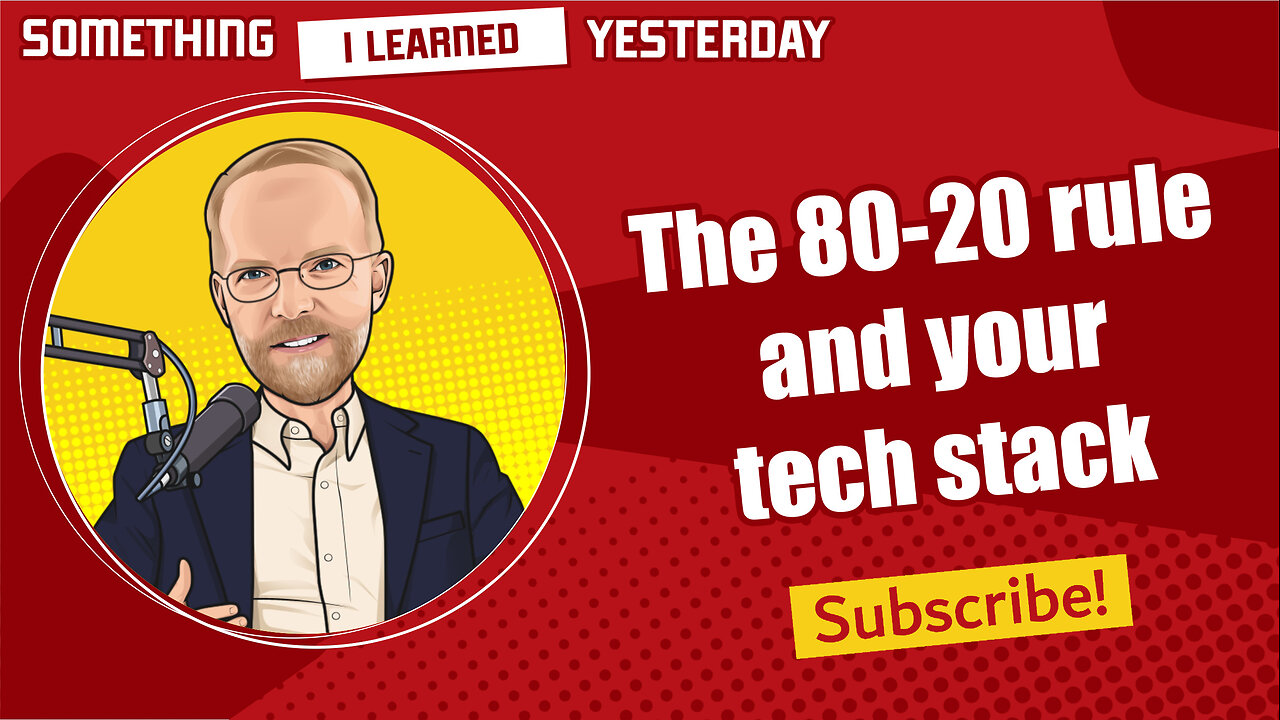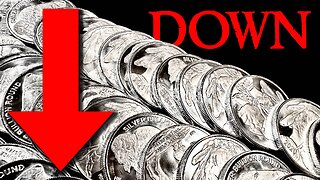Premium Only Content

207: Mr. Pareto meets your tech stack
I’ve mentioned the Pareto principle before. It’s one of those odd quirks about life that sticks with you. It says that 20 percent of causes bring about 80 percent of effects. So 20 percent of your advertising brings in 80 percent of your ad revenue. 20 percent of basketball players score 80 percent of the points. 20 percent of authors sell 80 percent of the books. And on it goes.
It immediately raises the question, “why not just do the 20 percent?”
If you could make 80 percent of your income by only working one day a week, wouldn’t that be great? And then you could have five jobs where you only work one day a week on each of them and earn 4 times as much as you’re earning now.
It probably doesn’t work that way, but keep that concept in mind as I talk about tech stacks.
Back when Amazon and Apple were first getting into the magazine business, I was somewhat appalled at their lack of seriousness. Magazine fulfillment is incredibly complicated. They wanted to treat it like selling a toaster.
Fulfillment systems manage lots of crazy stuff that marketers and circulation experts have dreamed up over the last 50 years. For example, if I give you a gift subscription, I’m the donor and you’re the donee. If I have a subscription, I’m a subscribing donor. I might have multiple donees. There might be different gift subscription rates for subscribing vs. non-subscribing donors. There might be different rules for when the donor doesn’t renew the donee’s gift. It gets stupidly complicated.
It got that way because lots of clever people were trying to find small efficiencies. A one percent increase can end up being a lot of money when you’re dealing with a magazine with 5 million subscribers.
Apple and Amazon came along and said to heck with all that complicated stuff. There’s no reason a magazine has to be that much different from your subscription to coffee or vitamins. We’ll just ignore all those little “optimizations” that make the process so complicated.
Did Amazon do 20 percent of the effort and get 80 percent of the benefit? Maybe.
Now let’s turn that around and look at it from the other perspective.
You heard a presentation on all the cool things you can do with some new technology. Let’s say it’s a customer data platform. You make a pitch to buy one, but the CIO says “we can build 80 percent of that for 20 percent of the cost.”
I’d be inclined to doubt that, but let’s take him at his word. Do you do it?
Here are some things to consider.
1. Do you want to be in the software business? After you build this thing – or cobble it together from a series of plugins and so on – you’re going to have to maintain it. Are you ready to do that?
2. Are you expecting to sell your company any time soon? The buyer might not want a homegrown monkey on his back.
3. Do you want to build a platform for growth through acquisitions? It will probably be easier to incorporate your acquisitions into a commercial solution than into your homegrown solution for the simple reason that the commercial solution has worked with lots of different companies while your homegrown solution was built with only you in mind.
On the other hand, of course, the commercial solution might be like that professional fulfillment system that has a zillion functions you’ll never use.
It’s a hard question, but here’s my advice. If you expect to sell, or if you want to build a platform for growth, stick with the professional software. If you anticipate being a relatively small and independent shop, then consider the smaller solution and get used to the fact that you won’t be able to do everything you might like.
-
 42:41
42:41
Athlete & Artist Show
2 hours ago $0.54 earnedSeason 5 Episode 3 LIVE
14.2K2 -
 LIVE
LIVE
I_Came_With_Fire_Podcast
10 hours agoThe US GOVERNMENT is PLANNING a UAP FALSE FLAG ATTACK
465 watching -
 18:10
18:10
Sideserf Cake Studio
4 hours ago $0.60 earnedIs This the ULTIMATE Cake Smashing Moment?
14.8K -
 12:51
12:51
Misha Petrov
17 hours agoTrump KICKS OUT Zelenskyy After HEATED White House Meeting!
14.5K57 -
 16:39
16:39
Tactical Considerations
1 day ago $0.58 earnedWatchtower Apache Double Stack 1911 Made Me Question Everything?
12.8K -
 16:20
16:20
T-SPLY
5 hours agoCNN Meltdown Over Zelesnky Disrespecting Donald Trump And JD Vance
10.9K12 -
 8:39
8:39
Silver Dragons
22 hours agoGold & Silver Price KEEP DROPPING 👀
7.8K4 -
 1:20:14
1:20:14
TheTapeLibrary
18 hours ago $0.39 earnedThe Strangest Paranormal Case of All Time
5.67K1 -
 13:58
13:58
Chris From The 740
7 hours ago $0.13 earnedOld School Icon, New School Features – The Influencer X Hits The Mark!
4.16K -
 30:31
30:31
SB Mowing
1 day agoI brought in REINFORCEMENTS when I saw the state of this yard
157K52